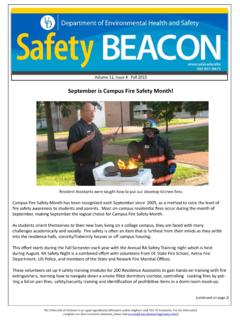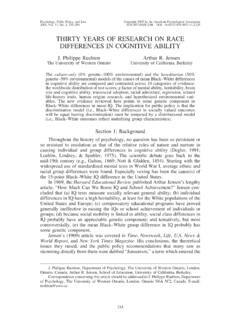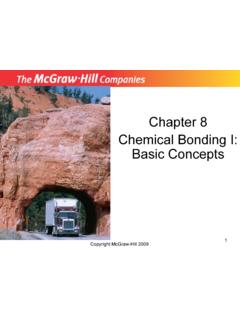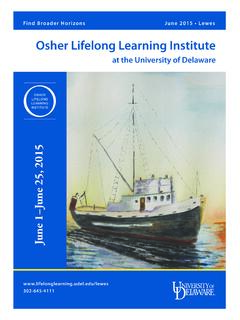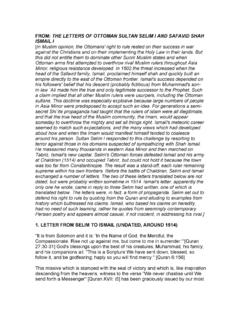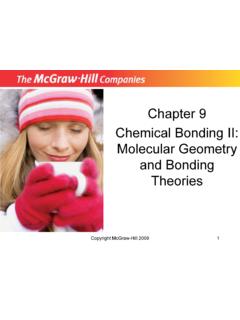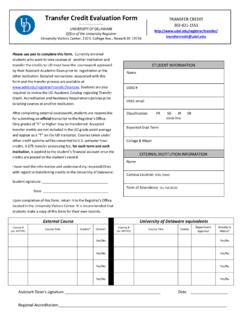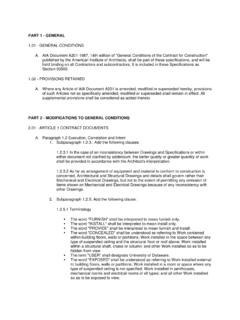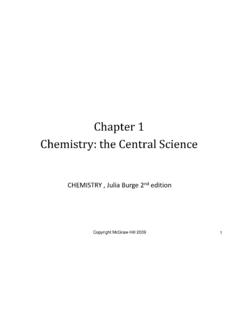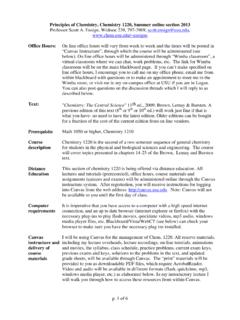Transcription of Chapter 1 Chemistry: The Central Science
1 Chapter 1 chemistry : The Central ScienceCHEM 101 Dr. Geoff SametzFall 2009 What IS chemistry ? Text: The study of matter and the changes that matter undergoes Focus: how matter interacts at the atomic/molecular levelWhy The Central Science ?Other scientific disciplines require an understanding of how matter behaves. Some examples:Physics: electronic devices require an understanding of materials called semiconductorsBiology Biochemistry OrganicChemistry (the study of carbon-containing compounds)Copyright McGraw-Hill The Scientific MethodCopyright McGraw-Hill Classification of Matter Matter is either classified as a substanceor a mixtureof substances. Substance Can be either anelement or a compound Has a definite (constant) composition and distinct properties Examples: sodium chloride, water, oxygenCopyright McGraw-Hill 20097 States of Matter Solid particles close together in orderly fashion little freedom of motion a solid sample does not conform to the shape of its container Liquid particles close together but not held rigidly in position particles are free to move past one another a liquid sample conforms to the shape of the part of the container it fillsCopyright McGraw-Hill 20098 Gas particles randomly spread apart particles have complete freedom of movement a gas sample assumes both shape and volumeof container.
2 States of matter can be inter-converted without changing chemical composition solid liquid gas (add heat) gas liquid solid (remove heat)Copyright McGraw-Hill 20099 States of Matter Physical vs. Chemical Change In chemistry , we re chiefly concerned with how atoms bond with each other. A chemical change involves making or breaking chemical bonds to create new substances. A physical change alters a substance without changing its chemical crushing, melting, McGraw-Hill 200911 Substances Element:cannot be separated into simpler substances by chemical means. Examples:iron, mercury, oxygen, and hydrogen Compounds:two or more elements chemically combined in definite ratios Cannot be separated by physical means Examples: salt, water and carbon dioxide Copyright McGraw-Hill 200912 Mixtures Mixture: physical combination of two or more substances Substances retain distinct identities No universal constant composition Can be separated by physical means Examples: sugar/iron.
3 Sugar/waterCopyright McGraw-Hill 200913 Atoms of an elementMolecules of an elementMolecules of a compoundMixture of two elements and a compoundMolecular Comparison of Substances and MixturesCopyright McGraw-Hill 200914 Types of Mixtures Homogeneous: composition of the mixture is uniformthroughout Example: sugar dissolved in water Heterogeneous: composition is notuniform throughout Example: sugar mixed with iron filingsCopyright McGraw-Hill 200915 Classification of MatterCopyright McGraw-Hill 200916 Classify the followingAluminum foilBaking sodaMilkAirCopper wire Copyright McGraw-Hill 200917 Aluminum foil: substance, elementBaking soda: substance, compoundMilk:mixture, homogeneousAir:mixture, homogeneousCopper wire: substance, element Copyright McGraw-Hill Scientific Measurement Used to measure quantitative properties of matter SI base unitsCopyright McGraw-Hill 200919SI Prefixes Copyright McGraw-Hill 200920 Mass: measure of the amount of matter (weightrefers to gravitational pull) Temperature.
4 Celsius Represented by C Based on freezing point of water as 0 C and boiling point of water as 100 C Kelvin Represented by K (no degree sign) The absolute scale Units of Celsius and Kelvin are equal in magnitude Fahrenheit (the English system) ( F)Copyright McGraw-Hill 200921 Equations for Temperature CKo 9532) F( Coo 32 C59 Foo Copyright McGraw-Hill 200922 Temperature ConversionsA clock on a local bank reported a temperature reading of 28oC. What is thistemperature on the Kelvin scale? CKo K C28 Ko Copyright McGraw-Hill 200923 PracticeConvert the temperature reading on the local bank (28 C) into the corresponding Fahrenheit C59 Foo F82 32 C28 59 Foo o Copyright McGraw-Hill 200924 Volume: meter cubed (m3) Derived unit The unit liter (L) is more commonly used in the laboratory setting.
5 It is equal to a decimeter cubed (dm3).Copyright McGraw-Hill 200925 Density: Ratio of mass to volume Formula: d= density (g/mL) m= mass (g) V= volume (mL or cm3)(*gas densities are usually expressed in g/L)Vmd Copyright McGraw-Hill 200926 PracticeThe density of a piece of copper wire is g/cm3. Calculate the volume in cm3of a piece of copper with a mass of 33cm dmVCopyright McGraw-Hill Properties of Matter Quantitative:expressed using numbers Qualitative:expressed using properties Physical properties:can be observed and measured without changing the substance Examples: color, melting point, states of matter Physical changes:the identity of the substance stays the same Examples: changes of state (melting, freezing) Copyright McGraw-Hill 200928 Chemical properties:must be determined by the chemical changesthat are observed Examples: flammability, acidity, corrosiveness, reactivity Chemical changes:after a chemical change, the original substance no longer exists Examples.
6 Combustion, digestion Copyright McGraw-Hill 200929 Extensive property:depends on amount of matter Examples: mass, length Intensive property:does not depend on amount Examples: density, temperature, colorCopyright McGraw-Hill Uncertainty in Measurement Exact: numbers with defined values Examples: counting numbers, conversion factors based on definitions Inexact: numbers obtained by any method other than counting Examples: measured values in the laboratoryCopyright McGraw-Hill 200931 Significant figures Used to express the uncertainty of inexact numbers obtained by measurement The last digit in a measured value is an uncertain digit -an estimate Copyright McGraw-Hill 200932 Guidelines for significant figures Any non-zero digit is significant Zeros between non-zero digits are significant Zeros to the left of the first non-zero digit are not significant Zeros to the right of the last non-zero digit are significant if decimal is present Zeros to the right of the last non-zero digit are not significant if decimal is not presentSimplified rule.
7 If you can t write the number without the zeros, they are space-fillers and not can t write eleven hundred without the = 2 = 5 has to be a reason for all those is 2 sigfigsbut is 4 sigfigsCopyright McGraw-Hill 200934 PracticeDetermine the number of significant figures in each of the cm 4 significant g2 significant figures1205 m4 significant figures 250 mL2 significant figures mL5 significant figures Copyright McGraw-Hill 200935 Calculations with measured numbers Addition and subtraction Answer cannot have more digits to the right of the decimal than any of original numbers Example: two digits after decimal point+ three digits after decimal round to McGraw-Hill 200936 Multiplication and division Final answer contains the smallest number of significant figures Example: x = round to 11 (Limited by to twosignificant figures in answer)Copyright McGraw-Hill 200937 Exact numbers Do not limit answer because exact numbers have an infinite number of significant figures Example: A penny minted after 1982 has a mass of g.
8 If we have three such pennies, the total mass is 3 x g = g In this case, 3 is an exact number and does not limit the number of significant figures in the McGraw-Hill 200938 Multiple step calculations It is best to retain at least one extra digit until the end of the calculation to minimize rounding error. Rounding rules If the number is less than 5 round down . If the number is 5 or greater round up .Copyright McGraw-Hill L + L = LCalculator answer: L Round to: L Answer to the tenth cm x cm x cm = cm3 Calculator answer: cm3 Round to: cm3 round to the smallest number of significant figuresCopyright McGraw-Hill 200940 Accuracy and precision Two ways to gauge the quality of a set of measured numbers Accuracy:how close a measurement is to the true or accepted value Precision.
9 How closely measurements of the same thing are to one another Copyright McGraw-Hill 200941both accurate and precisenot accurate but preciseneither accurate nor preciseCopyright McGraw-Hill 200942 Describe accuracy and precision for each setStudent A Student B Student g True mass is gramsCopyright McGraw-Hill 200943 Student A s results are precise but not B s results are neither precise nor C s results are both precise and McGraw-Hill Using Units and Solving Problems Conversion factor:a fraction in which the same quantity is expressed one way in the numerator and another way in the denominator Example: by definition, 1 inch = cm cm 1in 1cm McGraw-Hill 200945 Dimensional analysis:a problem solving method employing conversion factors to change one measure to another often called the factor-label method Example: Convert inches to meters Conversion factors needed: cm = 1 in and 100 cm = 1 meterm 100m 1in 1cm *Note that neither conversion factor limited the number of significant figures in the result because they both consist of exact McGraw-Hill 200946 Notes on Problem Solving Read carefully.
10 Find information given and what is asked for Find appropriate equations, constants, conversion factors Check for sign, units and significant figures Check for reasonable answerCopyright McGraw-Hill 200947 PracticeThe Food and Drug Administration (FDA)recommends that dietary sodium intakebe no more than 2400 mg per day. Whatis this mass in pounds (lb), if 1 lb = g?lb10 1mg 1000g 1 mg 24003 Copyright McGraw-Hill 200948 Key Points Scientific method Classifying matter SI conversions Density Temperature conversions Physical vs chemical properties and changes Precision vs accuracy Dimensional analysis
